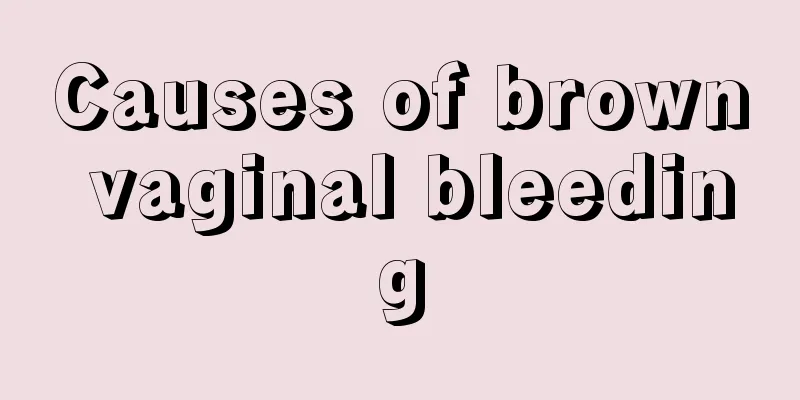What are "prepared soy sauce" and "prepared vinegar"? What are the hazards of consuming them?

|
On June 29, the State Administration for Market Regulation issued an announcement stating that soy sauce and vinegar manufacturers are no longer allowed to produce and sell products labeled as "prepared soy sauce" and "prepared vinegar", and will severely crack down on illegal activities of using non-edible substances such as industrial salt and industrial acetic acid to produce food. This news has attracted great attention from manufacturers and consumers. What exactly are "prepared soy sauce" and "prepared vinegar"? What are the health effects of consuming such products? Why is it required that they no longer be produced or sold? On July 2, a Science and Technology Daily reporter interviewed relevant experts in the industry. Formulated products are low-cost but high-risk "Prepared soy sauce that is prohibited from being labeled as 'soy sauce' refers to a liquid condiment made from brewed soy sauce with acid hydrolyzed vegetable protein seasoning liquid and food additives added." Wang Hao, associate professor at the School of Food Engineering and Biotechnology of Tianjin University of Science and Technology, said that during the production process, when acid hydrolyzed vegetable protein is used to produce amino acids and the process is not perfect, chloropropanol contamination will occur. This is because the acid hydrolyzed protein contains fat impurities, which produce glycerol chloride at high temperatures. Chloropropanol will not be produced in the traditional method of producing naturally brewed soy sauce. However, since acid-hydrolyzed protein liquid has low cost and contains amino acid series substances and flavor components, it is widely used in the preparation of soy sauce. "Chloropropanol has acute and chronic toxic effects, and is also genotoxic, reproductively toxic, neurotoxic, and carcinogenic." Wang Hao emphasized that in addition, some companies use animal hair to prepare soy sauce in order to reduce costs, and the production process produces the carcinogen trichloropropanol, which is extremely harmful to the human body. "Prepared vinegar is made from brewed vinegar, which accounts for 50% of the total acid source, plus edible glacial acetic acid and food additives." Wang Hao introduced that glacial acetic acid (glacial acetic acid) can be divided into edible glacial acetic acid (pure acetic acid) and industrial glacial acetic acid (industrial acetic acid). Industrial acetic acid contains heavy metals and can only be used in chemical production according to relevant laws and regulations. The concealment of industrial acetic acid in vinegar is high and detection is difficult. On May 27, 2009, the Ministry of Health of China issued the "List of Non-food Substances that May Be Illegally Added to Food (Third Batch)", which clearly listed industrial acetic acid as non-food substances. "Edible acetic acid has high requirements for purification, and its impurities must be controlled within a safe range." Wang Hao said that industrial acetic acid, because it is industrially synthesized, uses relatively low-grade solvents and has lower purification requirements than edible acetic acid. It often contains many impurities, such as some free mineral acids, heavy metal arsenic, lead, etc. Experts also said that after consumers eat it, they will suffer from indigestion and diarrhea, and long-term consumption will harm health. If the concentration of glacial acetic acid in food is too high, it will also burn the digestive tract mucosa. Especially for pregnant women, the elderly, children and other people with weak gastrointestinal functions, it will cause irritation. In addition, industrial acetic acid is extracted from petroleum by-products and contains benzene substances, which have the risk of causing cancer. Dr. Wang Shuo, who has been engaged in soy sauce research at Yangzhou University's Food Safety and Quality Control Laboratory, believes that brewed seasonings and formulated seasonings are indeed very different. Brewed seasonings are made from raw materials such as soybeans and wheat that have undergone microbial fermentation and are richer in nutrients, while formulated seasonings are made by mixing brewing substrates with seasoning liquids, food additives, etc. and have relatively low nutritional value. Ensure food safety in accordance with laws and regulations "In recent years, with the improvement of residents' living standards and the accelerated pace of life, the refinement of condiments has become an inevitable trend. The market price of ordinary condiments has increased significantly after adding some 'gimmicks' of high-end ingredients. More and more food additives are used in soy sauce and vinegar, two seemingly ordinary condiments that have been consumed for thousands of years, resulting in new health and safety problems in condiments." Wang Shuo said. Wang Shuo told reporters that according to the National Food Safety Standard for Soy Sauce (GB2717-2018), soy sauce is a liquid condiment with special color, aroma and taste made from soybeans and/or defatted soybeans, wheat and/or wheat flour and/or wheat bran as the main raw materials, through microbial fermentation. The production of soy sauce should have a complete fermentation and brewing process, and raw materials such as acid hydrolyzed vegetable protein seasoning liquid should not be used to prepare and produce soy sauce. The reporter learned that in the "Soy Sauce Hygiene Standard" (GB2717-2003) issued in 2003, soy sauce is divided into brewed soy sauce and formulated soy sauce according to the production process. Among them, formulated soy sauce is a liquid condiment made of brewed soy sauce as the main body, acid hydrolyzed vegetable protein seasoning liquid, food additives, etc. Compared with the original hygiene standard GB2717-2003, the biggest difference between the new standard GB2717-2018 and the original hygiene standard GB2717-2003 is that it is no longer applicable to products produced by the formulation process. It is worth noting that the "Announcement" states that soy sauce and vinegar manufacturers should organize production in accordance with food safety laws and regulations and food safety standards, strengthen the procurement of raw and auxiliary materials, production process control, product factory inspection and food additive use management, establish a food safety traceability system, and ensure product quality and safety. In Wang Shuo's words, "Soy sauce and vinegar products must be labeled with food labels truthfully and legally, with standard names such as 'soy sauce' and 'vinegar' clearly marked in a conspicuous position on the label, and various food raw materials and food additives must be labeled truthfully and accurately. Condiments that do not meet the national food safety standards for soy sauce and vinegar must not be labeled with the names or categories of 'soy sauce' or 'vinegar'." In the view of relevant experts, the ban on "preparation" is to better ensure food safety and reduce food safety risks. Soy sauce and vinegar are necessities of life. They not only give people the "taste of food" and the "taste of life", but also the "taste of safety" and "the taste of health". In fact, "prepared soy sauce" and "prepared vinegar" are not only problems of unqualified workmanship and poor flavor, but also issues of health and safety. In the process of building a "Healthy China", we need to start with small things, we need to start with the "preparation" constraints of soy sauce and vinegar, we must strengthen market monitoring and crack down on illegal production and sales. Source: Science and Technology Daily Editor: Zhang Qiqi Reviewer: Wang Xiaolong Final judge: He Yi |
<<: What fertilizer is good for succulents? How to grow succulents without sunlight?
>>: Can succulents be placed at the head of the bed? Why should succulents not be watered?
Recommend
What are the principles of chemotherapy for breast cancer?
Although both men and women have breasts, women a...
What are the uterine ligaments?
The uterus contains not only cervical membrane an...
Will uterine curettage affect pregnancy?
Curettage is an act that is harmful to physical h...
Can I get pregnant with pelvic effusion?
Nowadays, women often have some incorrect living ...
Preventing sagging breasts by not breastfeeding after childbirth
This is an era of beauty. Many mothers have recov...
Academician Zhong Nanshan: During the epidemic, it is very important to protect your immunity!
Reviewer of this article: Chen Haixu, Deputy Dire...
The reason why there is black stuff in the vaginal discharge
We all know that normal female leucorrhea is colo...
What kind of tea is good for women with constipation?
Sixty to seventy percent of people are troubled b...
What are the effects of Miaochao? Gynecologists are here to answer!
Nowadays, many women have endocrine disorders, wh...
The best way to regulate endocrine
When the human body has endocrine imbalance, not ...
Is luteal phase bleeding a sign of pregnancy?
Many women will inadvertently experience bleeding...
Can't I take a shower during my period?
Although women's menstruation is a normal phy...
Blood clots during menstruation
Adult women normally have their menstrual period ...
Is it normal for pregnant women to have cervical mucus?
Cervical plug mucus is a type of cervical mucus t...
How do breasts change during pregnancy?
Breasts are a female's secondary sexual chara...









